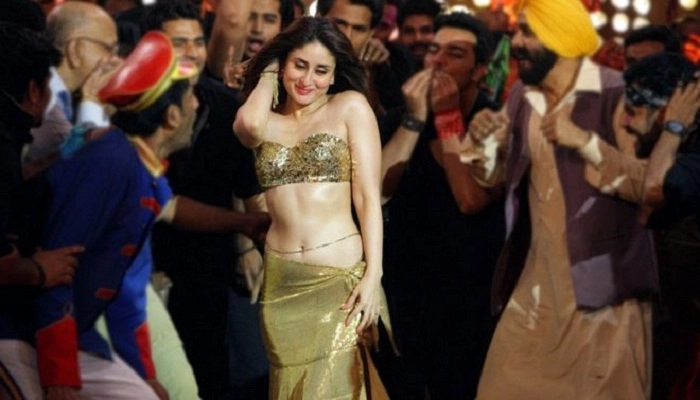Laura Mulvey, a British filmmaker and feminist film theorist, proposed the idea of the Male Gaze, which ‘invokes the sexual politics of the gaze and suggests a sexualised way of looking that empowers men and objectifies women. In the male gaze, the woman is visually positioned as an вАЬobjectвАЭ of heterosexual male desire’ (Loreck, 2016). This blog will take a close look at how the male gaze differs in Eastern and Western films, particularly in Bollywood.
The concept of the “Male Gaze” is evident not just through representation in films but also in production. For instance, while creating an enticing portrayal of a female lead, directors may choose specific camera angles such as close-ups of the subject’s lips, waist, and chest. An excellent illustration of this is Bollywood actress Katrina Kaif, who is objectified by three groups of men in the 2012 action-drama film Agneepath’s item song “Chikni Chameli.” These groups include the film’s two male leads, Sanjay Dutt and Hrithik Roshan, the directors Karan Malhotra and Karan Johar through the camera lens, and the male viewers.

In this image from the music video, we can see how lustful the men are for Kaif – one with his wrists crossed together signing to be handcuffed by her, implying that he is submissive to her, whilst the rest of the men are all staring at her face and body. In fact, the music video begins with her revealing herself, and even then, her face is shown last. During this sequence, audiences can see that Dutt and Roshan are watching her perform as the camera is intentionally placed behind their chairs, therefore implying that Kaif is the ‘spectacle’. This happens to be the case in most films where the woman is what is to be observed, whilst the man is the observer.
However, it is no different in Western cinema. A common example of the male gaze in Hollywood that a lot of people tend to immediately think of is the video below – Megan Fox, or Mikaela, in Transformers. The ‘Eyes on Mikaela’ scene heavily emphasises Fox’s body through camera work, as well as through representation. Sam is seen staring at her waist whilst she is not looking, further objectifying her, and even has a moment to himself to feel astounded by her beauty when he casually looks away.
Mulvey primarily examines the film industry, although the male gaze can also be observed in a variety of other contexts, including advertising and the news. It has become increasingly normalised that many consumers do not even realise that the female is being portrayed in a way that is deeply rooted in misogynistic and patriarchal structures in society. The film industry has recognised the harmful reinforcement of gender stereotypes and is working to change the way women are portrayed in the media. This includes hiring more female directors and improving workplace policies by educating men, all of which contribute to creating a more diverse and inclusive work environment.
Reference list:
Loreck, J. (2016). Explainer: what does the ‘male gaze’ mean, and what about a female gaze? Available at: https://theconversation.com/explainer-what-does-the-male-gaze-mean-and-what-about-a-female-gaze-52486#:~:text=The%20%E2%80%9Cmale%20gaze%E2%80%9D%20invokes%20the,object%E2%80%9D%20of%20heterosexual%20male%20desire (Accessed: 2 December 2023)


Hi Akanksha. This was a great read. It was very concise and clear, and I like how you used examples not only from Western films but also from Bollywood to show how this is a global issue. I also appreciate how you mentioned that the male gaze is not only occurring in the film industry. In advertising for fragrances and clothing, oftentimes females are positioned in the same objectified and sexualised way, in order to persuade males to buy these products. What impacts do you believe this “male gaze” has on the young females in our society, and do you think the “female gaze” is actively challenging and changing this?
Hi Kameron! I think that the male gaze in media has significant impacts on young females in our society. It shapes their perceptions of self-worth, body image, and societal roles. Repeated exposure to media portraying women through the male gaze can lead to internalised standards of beauty and behaviour that align with the heterosexual male eye. This can create pressure to conform to unrealistic ideals and limit self-expression, affecting confidence and mental well-being among young females. The “female gaze” shift presents a possible counterbalance to this dynamic. The goal of the female gaze is to represent women in a way that goes beyond conventional objectification, empowering them and their varied experiences, desires, and complexity. It promotes narratives that speak to women on their terms and challenges the one-dimensional visuals of women seen through the lens of men.